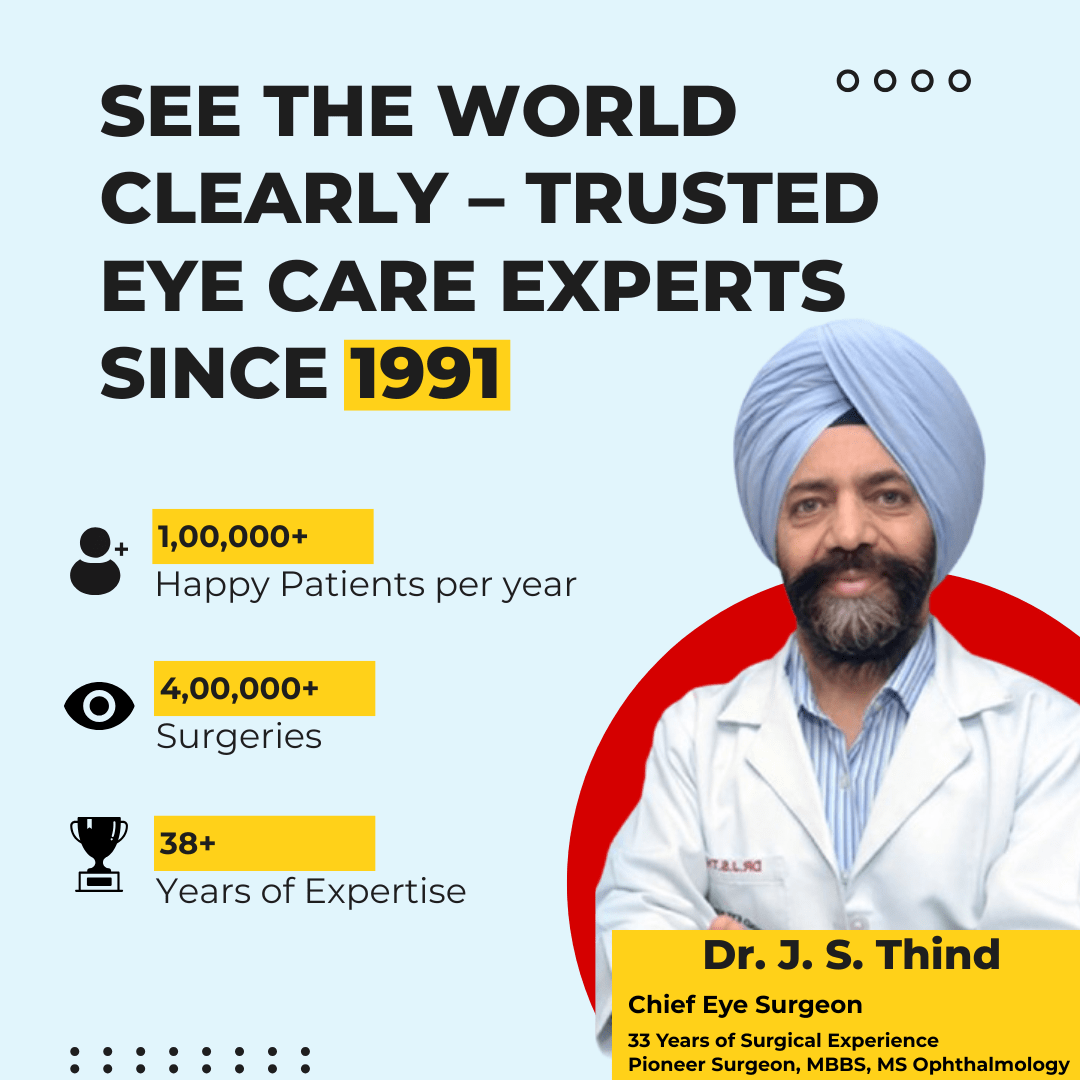In recent years, eye care has been transformed by rapid technological advancements that have revolutionized how eye diseases are diagnosed, monitored, and treated. Patients today have access to faster, more accurate diagnostics and safer, more effective treatments than ever before. At our ophthalmology clinic, we are committed to utilizing modern eye care technology to deliver outstanding care and help patients preserve their vision for the long term.
This article explores the many ways technology is shaping the future of eye care and how these innovations are improving outcomes for patients who visit our eye care clinic and the best eye hospital near me.
Overview of Advancements in Eye Care Technology
Eye care technology has come a long way from traditional tools like manual eye charts and basic ophthalmoscopes. Today, cutting-edge equipment allows eye specialists to see the inner workings of the eye in unprecedented detail, often detecting problems before they become symptomatic.
From artificial intelligence-powered diagnostics to advanced surgical procedures, modern eye care technology is not only improving treatment options but also enhancing the patient experience. These advancements allow for:
- Faster, more accurate diagnoses
- Earlier detection of diseases
- Minimally invasive treatments
- Improved surgical outcomes
- Personalized care plans
At our Thind Eye Hospital, we have invested in these innovations to offer our patients the highest standard of care possible.
How Technology Enhances Diagnostic Accuracy and Treatment Options
Accurate diagnosis is the cornerstone of effective eye care. Even minor errors in early diagnosis can lead to major complications if not addressed promptly. Thanks to modern eye care technology, eye specialists can now pinpoint problems with incredible precision.
- Optical Coherence Tomography (OCT): OCT is one of the most groundbreaking diagnostic tools in ophthalmology. This non-invasive imaging technique provides high-resolution, cross-sectional images of the retina. It allows eye doctors to detect early signs of conditions like macular degeneration, diabetic retinopathy, and glaucoma, often before any noticeable symptoms appear.
- Fundus Photography and Retinal Scanning: Digital fundus cameras capture detailed images of the back of the eye, helping specialists monitor changes in the retina, optic nerve, and blood vessels over time. This helps in diagnosing and tracking diseases like hypertensive retinopathy and diabetic retinopathy.
- Corneal Topography: Corneal topography maps the surface curvature of the cornea, essential for diagnosing conditions like keratoconus and for planning vision correction surgery such as LASIK.
- Artificial Intelligence (AI) in Diagnosis: AI-powered diagnostic tools are increasingly being used to analyze retinal images, helping doctors detect diseases with exceptional accuracy. These tools can analyze thousands of images in minutes, aiding in early diagnosis and allowing for faster treatment planning.
Laser Treatments, 3D Imaging, and Other Innovations in Eye Health
Modern technology is not only improving diagnosis but also revolutionizing treatment options available at the best eye hospital near me. Some of the most notable advancements include:
- Laser-Assisted Cataract Surgery: Laser technology has made cataract surgery more precise and safer. Femtosecond lasers are now used to create incisions and break up the cloudy lens with extraordinary accuracy. This results in faster recovery times and better visual outcomes.
- LASIK and SMILE Vision Correction Surgery: Vision correction surgery has evolved significantly. LASIK (Laser-Assisted In Situ Keratomileusis) reshapes the cornea to correct refractive errors like myopia, hyperopia, and astigmatism. The newer SMILE (Small Incision Lenticule Extraction) procedure offers even less invasive correction with faster recovery and fewer complications.
- 3D Imaging and Surgical Navigation: 3D imaging systems now guide surgeons during complex eye surgeries, such as retinal detachment repairs or vitreoretinal surgeries. These systems enhance visualization, improving precision and safety during delicate procedures.
- Intraocular Lenses (IOLs): Technological advancements have led to the development of premium IOLs that not only replace the clouded lens during cataract surgery but also correct refractive errors, reducing or eliminating the need for glasses or contact lenses post-surgery.
- Minimally Invasive Glaucoma Surgery (MIGS): For glaucoma patients, MIGS offers safer, less invasive alternatives to traditional surgery. These procedures lower intraocular pressure while reducing surgical risks and recovery times.
The Role of Technology in Preventive Eye Care and Early Detection
Preventive care is one of the most important areas where technology is making a significant impact. Many serious eye conditions develop slowly and without symptoms until substantial damage has occurred. Advanced screening tools allow for the detection of these diseases before irreversible harm is done.
- Screening for Diabetic Retinopathy: Patients with diabetes are at high risk for diabetic retinopathy. Modern retinal imaging systems can detect the earliest changes in the retina, allowing for early intervention and potentially preventing vision loss.
- Early Glaucoma Detection: Glaucoma, often called the “silent thief of sight,” can now be detected in its earliest stages using tools like OCT and visual field testing. Early detection allows for timely treatment to preserve vision.
- Genetic Testing and Personalized Medicine: Emerging technologies now allow for genetic testing to assess an individual’s risk for hereditary eye conditions. This enables doctors to create personalized prevention and monitoring plans tailored to each patient’s unique genetic profile.
- Remote Monitoring and Telemedicine: Advancements in telemedicine now allow patients to consult with eye specialists from the comfort of their homes, improving access to care, especially for those living in remote areas. Remote monitoring devices can track intraocular pressure and retinal changes, sending data directly to doctors for analysis.
Schedule an Eye Care Consultation at Our Ophthalmology Clinic
At our ophthalmology clinic, we are proud to integrate these cutting-edge technologies into every aspect of our practice. Whether you need routine screenings, management of a chronic eye condition, or are considering advanced vision correction surgery, we offer state-of-the-art diagnostics and treatment options designed to preserve and improve your vision.
By combining the latest innovations with compassionate, patient-centered care, we ensure every patient receives the highest level of eye care possible. Our commitment to investing in modern eye care technology allows us to detect problems early, treat conditions more effectively, and offer patients a better quality of life.


